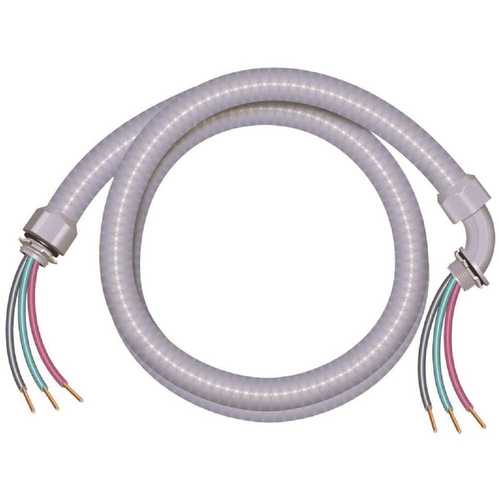The existing condition has a built-in banquette (bench) with hinged seats so that the interior space is accessible for storage.
There is a wall-mounted receptacle inside the bench. Because of the hinged top, the existing receptacle is "accessible" (so no code violation, i assume), but it's not usable in a practical sense, since it's inside the bench.
I'd like to extend the circuit from the existing outlet to add one or two receptacles on the front of the bench
I plan on securing the wiring to the wall and the inside faces of the bench. As this is accessible for storage, I'd say the wiring would be "susceptible to damage," and therefore needs some protection.
First i have to transition from wiring in the existing junction box to wiring on the wall surface. I imagine I'll start by replacing the existing recepticle with a blank wallplate with knockout, to provide a place to start a run of conduit or MC cable.
MC Cable
I understand if I were to use MC cable, the sheath needs to be bonded to an equipment ground. Is bonding at one end of the run sufficient, or is bonding at both ends of the run required?
If bonding at one end is sufficient, then I can use a metal old work box for my new receptacle, connect the equipment grounding conductor of the MC cable to this old work box, and I think I'm good to go, as the sheath of the MC would be bonded to equipment ground via the old work box at the end of the circuit. The starting wallplate with knockout would be grounded via the MC sheath, so all metal components are grounded.
If bonding at both ends is required, then I think I'm out of luck unless the box for the existing receptacle happens to be metal (I haven't checked, but I think it's likely to be plastic).
In the event the box at the existing receptacle is plastic, what other options do I have?
Liquid tight conduit
Would non-metal liquid-tight conduit be a suitable means of protection? Can it be used to provide protection in dry locations? I haven't found a non-metallic 1-gang cover with knockout, and the metallic cover wouldn't be grounded when secured to a plastic junction-box, so I'm not sure how I'd transition from the existing junction box to the liquid-tight conduit.
Wiremold steel raceway
I thought about a wiremold raceway to extend the circuit. I think this would be fine at the starting end, since their extension boxes include grounding screws.
But I haven't figured out how to transition from wiremold raceway into the BACK of an old work box to feed power to the new receptacles.
Questions
- Must MC cable sheath be bonded to ground at both ends, or only one?
- Would grounded MC sheath be a suitable ground for a metallic outlet cover on a non metallic box?
- Can non-metallic liquid-tight be used to provide protection from damage in a dry location?
- How could one transition wiremold raceway into the back of a junction box?







